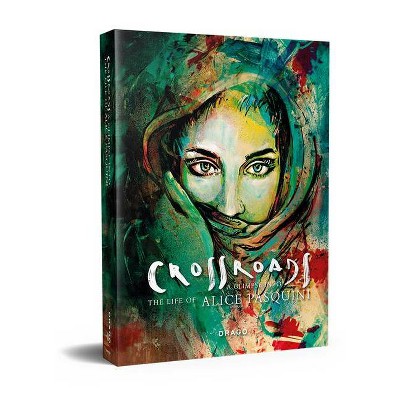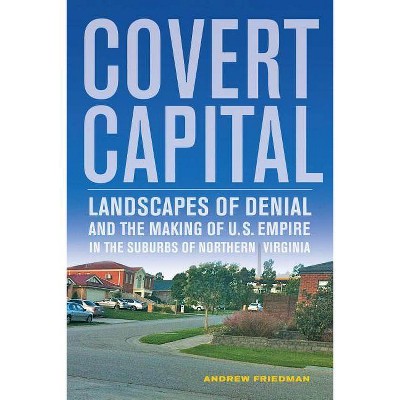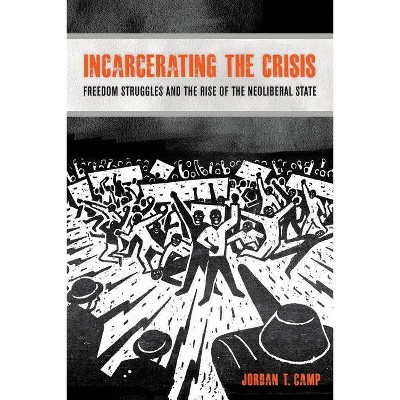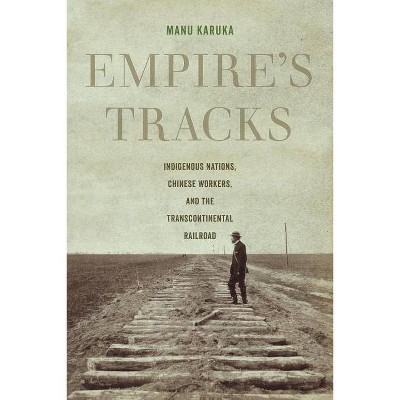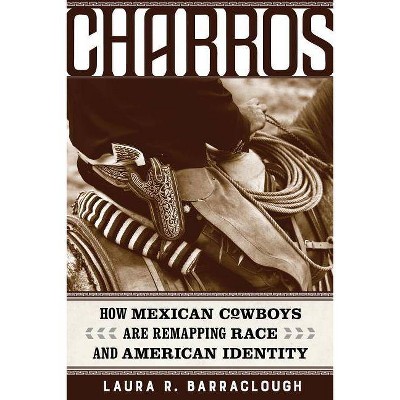Collisions at the Crossroads, 53 - (American Crossroads) by Genevieve Carpio (Paperback)

Similar Products
Products of same category from the store
AllProduct info
<p/><br></br><p><b> About the Book </b></p></br></br>"Collisions at the Crossroads examines mobility--the means by which we experience, manage, and give meaning to everyday channels of movement--as an agent in the production of racial difference. It demonstrates the ways forces as different as historical societies, Indian boarding schools, bicycle ordinances, alien land laws, immigration policy, traffic checkpoints, fair housing, incarceration, and Route 66 heritage construct racial hierarchies by allowing some people to move freely while placing limits on the mobility of others. Further, it examines the ways people of color have negotiated their place within these meaning systems through claiming the right to mobility or, in other instances, the right to stay put. This work focuses on the development of the Inland Empire, an understudied region located east of metropolitan Los Angeles, over the course of the 20th century"--Provided by publisher.<p/><br></br><p><b> Book Synopsis </b></p></br></br>There are few places where mobility has shaped identity as widely as the American West, but some locations and populations sit at its major crossroads, maintaining control over place and mobility, labor and race. In <i>Collisions at the Crossroads, </i>Genevieve Carpio<i> </i>argues that mobility, both permission to move freely and prohibitions on movement, helped shape racial formation in the eastern suburbs of Los Angeles and the Inland Empire throughout the nineteenth and twentieth centuries. By examining policies and forces as different as historical societies, Indian boarding schools, bicycle ordinances, immigration policy, incarceration, traffic checkpoints, and Route 66 heritage, she shows how local authorities constructed a racial hierarchy by allowing some people to move freely while placing limits on the mobility of others. Highlighting the ways people of color have negotiated their place within these systems, Carpio reveals a compelling and perceptive analysis of spatial mobility through physical movement and residence. <br><p/><br></br><p><b> From the Back Cover </b></p></br></br>"One of the smartest books I've read in years. By focusing on 'placeness' and mobility, Genevieve Carpio creates a new paradigm for understanding both overt and subtle forms of racism."--Mike Davis, author of <i>City of Quartz: Excavating the Future in Los Angeles</i> <p/> "Adding to the vibrant scholarly literature on race and place, Genevieve Carpio has produced an invaluable study of mobility and immobility in the race-making practices of California's Inland Empire. She has written <i>Collisions at the Crossroads</i> with great archival ingenuity and conceptual sophistication. She is also keenly attuned to the vivid details of lived experience and to the plainspoken humanity of the diverse people who are her subjects. A splendid accomplishment."--Matthew Frye Jacobson, author of <i>The Historian's Eye</i> and <i>Barbarian Virtues</i> <p/> "Good books often make us realize that we can't believe no one has studied this before. <i>Collisions at the Crossroads</i> provides groundbreaking insights into how mobility allowed some groups to become insiders and how the lack of it forced other groups to become outsiders, occupying different places in the regional racial hierarchy. A strongly original and insightful work."--Natalia Molina, Professor of American Studies and Ethnicity, University of Southern California, and author of <i>How Race Is Made in America</i> <p/> "Through close attention to the entanglement of race and everyday mobility, Genevieve Carpio shines a brilliant light on a previously unexplored aspect of the contested geographies of Southern California specifically and the American West more generally. Empirically rich, theoretically rigorous, and engagingly written, <i>Collisions at the Crossroads</i> connects the diverse experiences of Japanese citrus workers, Dust Bowl migrants, Latinx drivers of lowriders, and Mexican, Puerto Rican, and Filipino migrants to provide a counter-history of the role of mobility in the American West. For those interested in mobility studies, critical race theory, or the spatial histories of Greater Los Angeles, Carpio has provided a pioneering landmark text."--Tim Cresswell, author of <i>Maxwell Street: Writing and Thinking Place</i> <br><p/><br></br><p><b> Review Quotes </b></p></br></br><br><p>"<i>Collisions at the Crossroads</i> . . . presents a critical contribution to our understanding of the relationship between place, mobility, and race."</p>-- "California History"<br><br>"Carpio's attention to people's everyday negotiations with the structures that govern mobility will be of interest to historians of colonial and postcolonial mobility, to cultural historians of bicycles, automobiles, and highways, and to historians of migration, space, and place."-- "Journal of Transport History"<br><br>"This book is a must-read for all scholars of the U.S. West and those who wish to understand the historical precedent for limited mobility created by the current carceral state and immigration regime."-- "New Mexico Historical Review"<br><br>"Carpio shows how the Riverside Historical Society and many of the Inland Empire's Route 66 historians manipulate their region's history by remembering what they want to remember and ignoring the other accounts."-- "LA Taco"<br><br>"Carpio's book is a noteworthy contribution to our historical and present-day understanding of how racial hierarchies are used to curtail the rights and privileges of communities of color. . . . Reading a bit like a local version of Howard Zinn's <i>A People's History of the United States</i>, her writing poetically uncovers racial inequalities in the legal system, while simultaneously portraying a dynamic human experience."-- "Boom California"<br><br>"Carpio's book will no doubt inspire future scholars to consider the relationship between place and space, race, and mobility in a variety of temporal and geographic locations."-- "Journal of the West"<br><br>"This text earns a place of prominence in the field of American and ethnic studies and contributes greatly to the study of US history."-- "Aztlan"<br><br>"In this beautifully-written and clearly-argued work, Genevieve Carpio demonstrates the interconnectedness of mobility and race in inland southern California . . . [and] teaches scholars that mobility has been continuously contested, even as whites have sought to erase this history."-- "Journal of Arizona History"<br><p/><br></br><p><b> About the Author </b></p></br></br><b>Genevieve Carpio</b> is Assistant Professor of Chicana and Chicano Studies at the University of California, Los Angeles.
Price History
Cheapest price in the interval: 29.49 on November 8, 2021
Most expensive price in the interval: 29.49 on December 20, 2021
Price Archive shows prices from various stores, lets you see history and find the cheapest. There is no actual sale on the website. For all support, inquiry and suggestion messages communication@pricearchive.us
